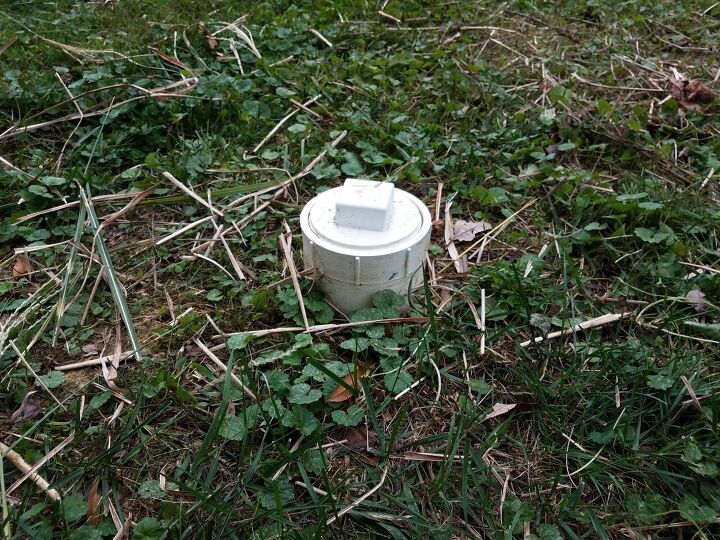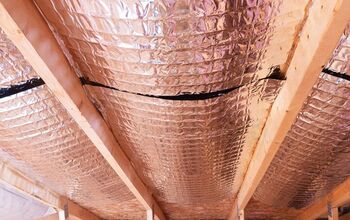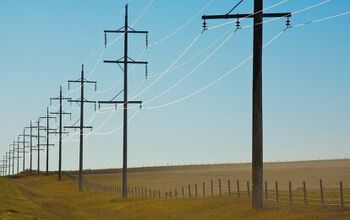How Much Does Sewer Cleanout Installation Cost?

A sewer cleanout isn’t something that everyone is familiar with. In fact, many homeowners are unfamiliar with what a sewer cleanout is, what it does, where it’s located on your property, and how much it costs to install one. Oftentimes, a sewer cleanout only becomes a relevant topic when something goes wrong.
Believe it or not, a sewer cleanout is a crucial component of your home’s plumbing system. This pipe offers direct access to the later sewer line that connects your plumbing system to either your septic tank or the municipal sewers.
The average sewer cleanout installation cost is $2,675 and that includes materials and labor. Homeowners spend an average of $250 per day to rent excavation tools and another $500 for equipment. It costs another $375 on average to clean the sewer line before installation.
Knowing the ins and outs of sewer cleanouts is important information to have for home maintenance and repair. With that said, here’s everything you need to know about sewer cleanouts – including what their function is, the various types, benefits, and what they cost to install.
What is a Sewer Cleanout?
In simplest terms, a sewer cleanout is a capped white or black pipe that connects to your main sewer line. It essentially functions as the dispersal unit for all the stock water that clogs the pipes of your home. Whenever you having clogging issues, homeowners can open up the sewer cleanout to free up the stock water.
This pipe is roughly three to six inches in diameter, providing direct access to the lateral sewer line that connects your plumbing system to either your municipal sewers or your septic tank. If your sewer line gets clogged, it can result in costly repairs and a potentially dangerous situation. Having easy access via a sewer cleanout not only makes addressing a sewer clog easier, it’ll also save you both time and money.
Sewer cleanouts can usually be found on or near your property line, or sometimes near a sidewalk. Older homes that were build prior to the mid-1980s and have their original plumbing system will most likely not have a sewer cleanout. If this is the case, having a sewer cleanout installed on your property is something that you should strongly consider.
Types of Sewer Cleanouts
The first step in the installation process of a sewer cleanout is to determine which type of cleanout you need. Generally speaking, there are three main types of cleanouts. These include:
Single Cleanout
Single cleanouts are essentially one pipe that is connected to your lateral sewer line at a 45-degree angle. Although it doesn’t allow for full access to the municipal sewer since it’s short by 45 degrees, it still offers a direct line from your residential plumbing system towards the municipality’s lateral line. The angle means that when you run a snake into a single cleanout, you can only access one side of the sewer line – which runs right into the city line.
Double Cleanout
A double cleanout is the most common type of cleanout used. It consists of two individual pipes that are installed next to each with a 45-degree angle connection, forming a U-shape. These connections face each other which allows for access to both sides of the sewer line – both your home line and the city line.
Test Tee Cleanout
A test tee is a single pipe that connects straight down to your sewer line at a 90-degree angle. It forms a T-shape and works like a double cleanout. However, because of the sharp angle it can be challenging to maneuver a drain snake or water jetter into the sewer line. As such, these types of cleanouts are typically used as a wall cleanout.
Sewer Cleanout Installation Breakdown
Once you determine the type of cleanout that you want to install, you need to pinpoint the exact location of the sewer line. There are a couple of ways to do this. First, you can contact the city and ask them to take a look at the infrastructure map or look for markings on the sidewalk that indicate where it is. However, the best and most efficient technique is to hire a professional plumber to come out and use their equipment to flag the location of your sewer line.
After the location of the sewer line is flagged on your property, the excavation process can begin. This involves excavating the part of the sewer line where the cleanout is going to be installed. A professional plumber will not only be able to find your sewer line, but can also advise you on the location where the cleanout should be installed and properly dig up the line without causing damage to it.
Once the sewer line is dug up and exposed, the next step is to measure out the section of the sewer line that needs to be cut out to install the cleanout. Then, the cleanout can be installed. It’s crucial that you get the best fit and test the cleanout to verify that it is waterproof and free of leaks prior to filling in the hole and capping the cleanout.
Sewer Cleanout Installation Cost
The average cost to install a sewer cleanout is between $1,850 and $3,500. However, you may pay more or less depending on depths, the type of cleanout, materials, and whether or not concrete or landscape has to be excavated to access the sewer line. Costs will land higher on the spectrum for installations that require deeper or more complicated excavations.
Regardless, both the pipe and materials typically cost between $70 and $150. However, more high-end materials could cost from $500 to $800. Tools and equipment, on the other hand, will cost you an additional $300 to $500. Then, you’ll need to consider the labor costs, which contribute to the high price of installation.
If you choose to take on the job yourself, you’ll still have to pay for the pipe, materials, and all the necessary equipment. You’re looking at about $500 in equipment, plus an extra $250 a day to rent the proper excavation tools. While it may end up being cheaper to install a sewer cleanout yourself, you could damage your sewer line in the process or improperly fit the pipes together. Both of these scenarios can lead to very costly damage, making it well worth it to hire a professional to get the job done right the first time.
Sewer Line Cleaning Costs
Another expense you’ll eventually come across is the cost to clean out a sewer line. These lines are found in every home, and usually go ignored until something goes wrong. However, regular sewer line cleaning can save you a lot of hassle and quite a bit of money in repair costs. Whenever you notice a foul odor, a backed-up drain, or clogged sewer lines, you should call in a professional immediately.
The average cost for sewer cleaning ranges from $150 to $600, with most homeowners paying around $250 for standard sewer main clog cleaning and a video inspection. Though, you could spend as little as $100 for light professional sewer cleaning with no major blockages, or as much as $1,000 for hydro-jetting of the main sewer line to resolve an extensive clog.
Sewer Line Cleaning Costs | |
| Average Cost | $250 |
| Average Range | $150 to $600 |
| Low End Cost | $100 |
| High End Cost | $1,000 |
Having a sewer cleanout not only reduces the likelihood of major problems, it also makes sewer line cleaning easier and more efficient.
Benefits of a Sewer Cleanout
Although having a sewer cleanout on your property may not be mandated by local building codes, there are a number of advantages that come with it. If you are looking for some reasons why you might need a sewer cleanout in your property line, here’s some benefits you can expect to enjoy:
- Affordable maintenance. Having a sewer cleanout means that you won’t have to worry about such meticulous plumbing monitoring, as pipe clogging will be minimal. Aside from this, you will no longer have to pay for plumbers to clean your sewer lines and the pipes since you will have convenient access to the lateral sewer line.
- Prevents backflow. Sewer cleanouts also function as drains. By uncapping the cleanout, you can drain excess water out of the pipes. This will prevent backflow on the ground or when the main sewer is back flowing into your home’s lateral sewer.
- Landscape preservation. When major clogging occurs, it’s inevitable for your landscape to be dug up to reach the later sewer underground. With a sewer cleanout, you no longer have to worry about this. Your plumber will be able to easily inspect, assess, and correct clogging through the cleanouts and by using cameras.
- Increases property value. Should you ever decide to put your home up for sale, having a sewer cleanout is a major selling point. Potential home buyers will usually have a drain inspection done and if you don’t have a sewer cleanout this may cause them to rethink purchasing your home. If you do have a sewer cleanout, this reassures the buyers that there won’t be any serious plumber repairs needed anytime soon.
How to Locate a Sewer Cleanout
If your home has a sewer cleanout, it’s usually pretty easy to locate. However, if the cleanout is buried, you may have some difficulty finding it. It’s important to keep in mind that some older homes may have their cleanouts inside of the home, while modern homes will have them outside. Additionally, you may have more than one cleanout on your property line. To locate your sewer cleanout, follow these steps:
- Start at the sidewalk. The pipes in your home are all connected to a lateral sewer line. As you walk along the curb, look out for a stamped letter ‘S’ anywhere near the sidewalk or in one of the bricks. Then, follow that marking in a straight line to your home and you should find the sewer cleanout.
- Look at your foundation. Over the years, installing cleanouts near roads or curbs became understood as inconvenient. Therefore, if you have a functioning septic tank in your home, your sewer cleanout(s) may be placed a few feet from your home’s foundation. If you don’t find it there, you’ll likely find it somewhere between the septic and the curb.
- Finding indoor cleanouts. As noted above, older homes often have indoor cleanouts. They are usually T or Y in shape and only one side of the pipes is capped. You’ll typically find indoor cleanouts in the basement, the attic, and vent pipes. You may also find them protruding from bathroom walls.
- Concealed cleanouts. Since cleanouts aren’t usually needed very often, yours may be shielded by grass, bushes, or underbrush. Alternatively, it’s possible that the cleanout is hidden in a box near the ground with a metal cover. In this case, look out for any box that looks like it might contain a large pipe.
Related Questions
What are the signs of a blocked sewer line?
The most obvious indication of a clog in your main sewer line is sewage or waste coming back out of your drain. Other signs include standing water in multiple sinks or tubs, sudden gurgling sounds coming from one of the drains, bad odors, and visible pieces of roots in the drain.
What does a sewer cleanout look like?
Sewer cleanouts are pipes that are usually between three and six inches in diameter. They feature a screw cap with a square knob or indentation on the top. It will most likely be found protruding from the ground outside of your home, between the street and your foundation. However, you may also find the sewer cleanout on the side of your home close to a bathroom.
How many sewer cleanouts should a house have?
Each home should have at least one sewer cleanout. However, some don’t have any, and other larger homes have as many as three.

Jessica considers herself a home improvement and design enthusiast. She grew up surrounded by constant home improvement projects and owes most of what she knows to helping her dad renovate her childhood home. Being a Los Angeles resident, Jessica spends a lot of her time looking for her next DIY project and sharing her love for home design.
More by Jessica Stone
























![10 Most Dangerous Neighborhoods in Baltimore [Updated]](https://cdn-fastly.upgradedhome.com/media/2023/07/31/9075655/10-most-dangerous-neighborhoods-in-baltimore-updated.jpg?size=350x220)


